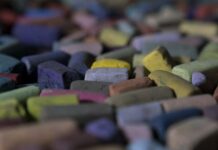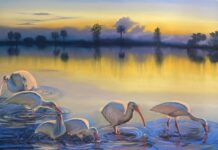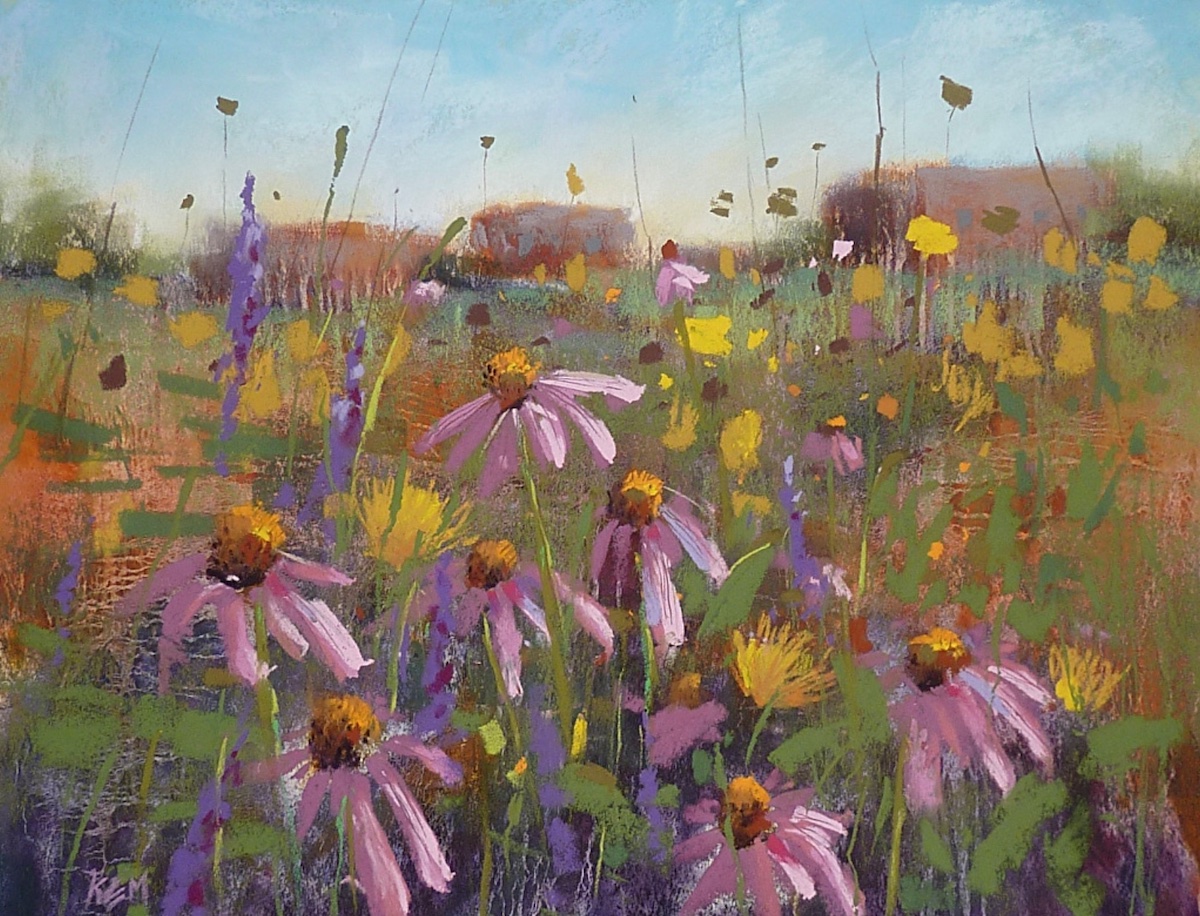
On painting with pastels > An article by Laura Vailati
“I love to paint flowers simply because I love flowers,” says Karen Margulis.
A sensitive artist devoted to painting with pastels, Karen has made simplification the key to the success of her compositions.
After working in a family daycare center for 21 years as an educator and with her own children grown, she realized in 2005 that she could resume her passion for art, which she had abandoned in her high school days.
“Fortunately, I discovered pastels and fell in love with them,” says the artist, who recognizes in the pastels the immediacy and vibrancy of this medium. “With pastels, I can leave a mark; it’s beautiful, it’s vibrant, and it will never change over time.”
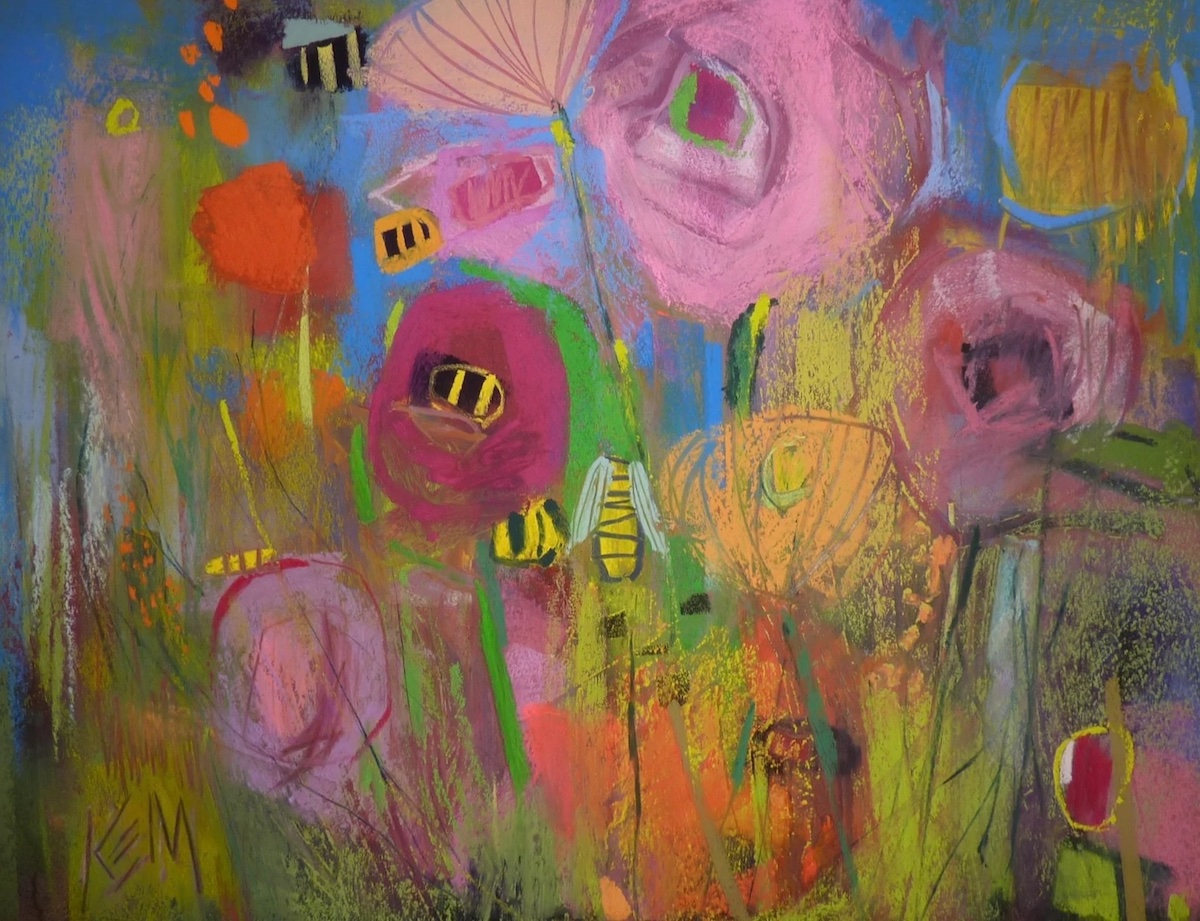
Meeting Marsha H. Savage – “really a guide for me,” the artist said – and doing a workshop with Richard McKinley were revelatory for her and led her to accept the challenge of painting in plein air. It “was anything but easy because the light is changing so you have to only capture the essence of the scene.” Karen also says she loves the intimacy of plein air and the sounds of the pastels on the paper as she moves across the surface with different marks and pressure.
According to Karen, plein air painting is essential to learn and see how things really are, because “what you see in nature is what really happens.”
Her rendering of flowers is poetic, both when she makes flowers realistically and in a more abstract way. The latter approach is a style the artist began working on three years ago, experimenting with the almost abstract representation of the elements of nature. Elements that, while remaining clearly recognizable, are charged with a dreamlike and playful atmosphere and in which the use of rich colors in terms of chroma, values, and hue are counterbalanced by the softer colors of atmospheric perspective with which she creates the compositional pathos of the scene.
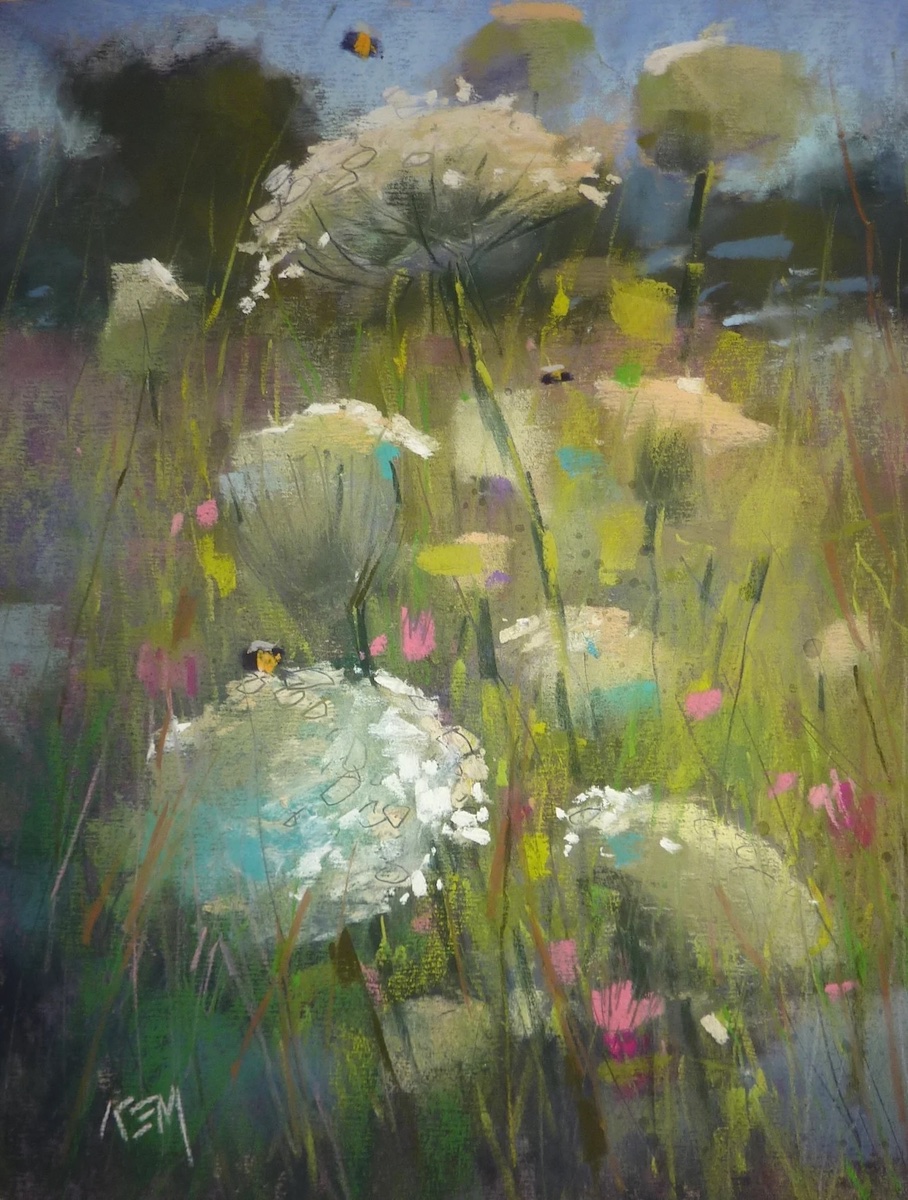
Be they red, white, or pink, Karen’s pastel wildflowers are mostly depicted in their natural environment, surrounded by their peers and submerged by herbaceous plants that adorn them, surround them, or soar skyward, individually to the point of making them the absolute protagonists of her paintings. It’s an effect that is also emphasized by the assumed point of view of the artist, who portrays her subjects with viewpoints and perspectives both, linear and aerial, to create the illusion of depth in the painting. It seems that the artist’s eye rises precisely from that silent micro-environment that coexists in the midst of the green undergrowth and that she recreates with single, vibrant touches of pastel or with a massed drafting of more or less full-bodied color spread with different pressure.

Technically, Karen likes to work on a small format while painting with pastels because as she says, in small size, “everything is whispering.” She usually works with a limited palette and begins the compositional process by choosing the subject. She then works with a simple value thumbnail based on three or four values of the same color family. She chooses pastels to represent the extremes in the subject, one pastel for the darkest dark, one for the lightest light, one for the most intense color, and the remaining middle values.
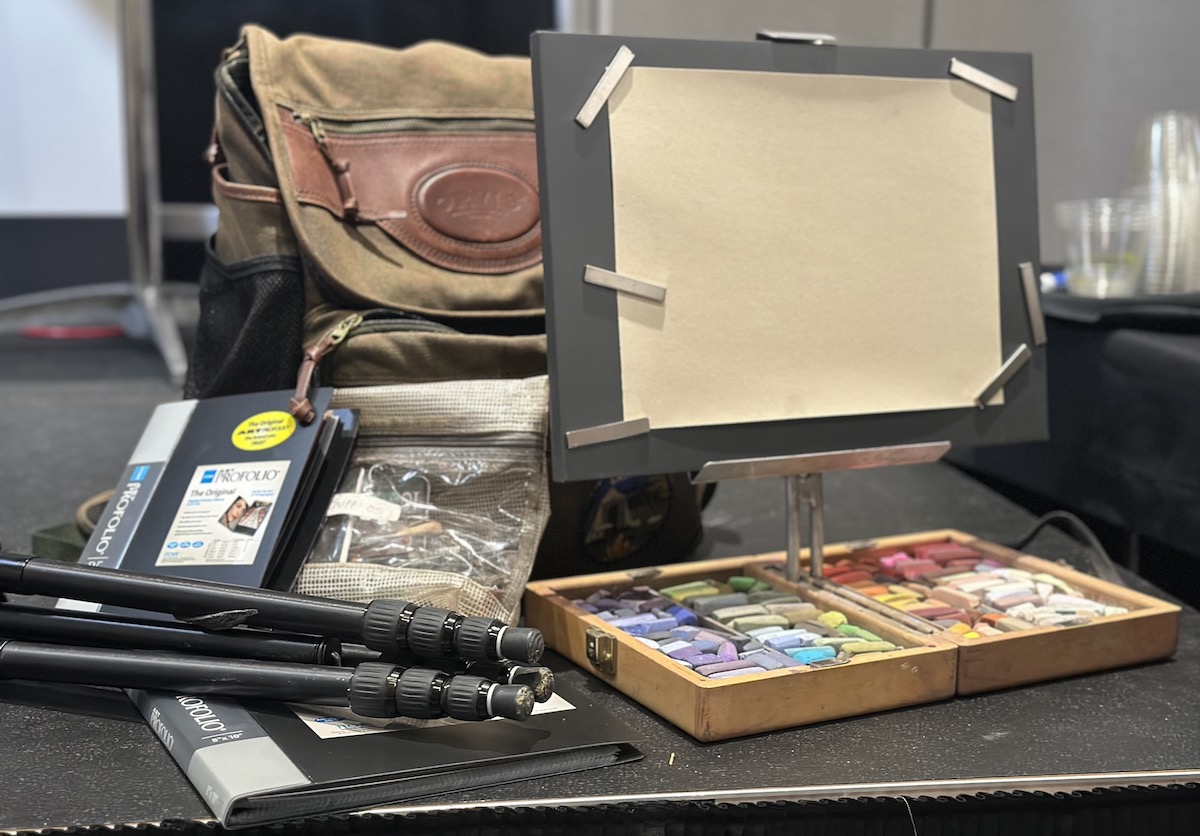
According to Karen, in order to make the picture more realistic and believable, it’s necessary to follow some guidelines. Among these, you need to create variety in terms of sizes and spacing of shapes in order to create and reinforce areas of contrast within the painting, and to establish the visual path toward which the viewer is guided. The connection between earth and sky is equally important for the credibility of the painting and it’s therefore necessary that there is continuity in terms of light direction and atmospheric conditions.
For her Pastel Live demonstration next week, Karen Margulis will show you how to simplify your materials, limit your pastel colors, and how to manage expectations. She reminds us that it’s crucial to experiment with new art materials, to have fun and remember that “failure is part of each individual’s growth process.”

